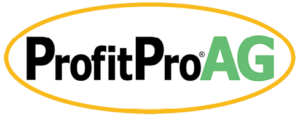At-Plant “Jump Start Yield”
Worried About High Fertilizer Prices?
Nitrogen fertilizer prices are shattering records. Supply chain challenges are getting worse. Inflation and shortages are becoming the norm. What’s your next move? Plant less corn next spring? Cut back on fertilizer to save money?
“The nitrogen situation is troubling,” says Dennis Klockenga, a CCA certified crops specialist with ProfitProAG. “I hear some farmers saying they’re not going to put on any fertilizer, other than some nitrogen on corn. Others figure maybe they’ll use a starter.”
While there’s a lot of uncertainty in the fertilizer market right now, there are factors you can control. “It’s important to look at your soil test first and then decide your fertilizer strategy, so you’re not heading for a train wreck,” Klockenga says.
There are other ways to control the controllables on your farm, manage your fertilizer bill and get your crop off to a strong start in 2022. “You need to get the soil microbes going,” Klockenga says.
That starts with proper residue management, which is phase one of ProfitProAG’s three-phase Controlling the Controllables “Recipe for Success.” It continues with phase two also included here! (We’ll cover phase three in a later article, so stay tuned.)
Phase I: Residue Management
What if you could get free fertilizer? Roughly four tons of corn residue per acre are left behind by a 180 bu/A corn crop. That material contains 80 pounds of nitrogen, 30 pounds of phosphorus, 190 pounds of potash, 16 pounds of sulfur, 35 pounds of calcium, and 25 pounds of magnesium. These nutrients are free, when you break down crop residue biologically and release these nutrients to feed next year’s crop.
Josh Knapke, who farms with his family in west-central Ohio near Rockford, knows how effective this “second harvest” can be. Knapke admits he and his brother were skeptical at first, though, when Klockenga suggested the residue management system.
Knapke sprayed ProfitProAG’s residue management product onto his fields following the 2020 harvest. He was shocked when he saw the results in the spring of 2021. “There was no residue left,” says Knapke, who raises corn, soybeans and wheat, with some corn-on-corn acres. “When we did vertical tillage, the stalk residue just disintegrated.”
The product can be applied in the fall as long as outside air temperatures are in the 40’s during the day, Klockenga says. It can be used on all crop residue, including cornstalks, small grains, soybeans and more. “We recommend spraying the product with 15 gallons of water per acre to get good coverage,” he adds.
Residue management is a key part of a new approach the Knapke brothers are taking to build soil health and boost yield potential, from eliminating ripping to adding more cover crops. The Knapke’s holistic system means they don’t use any commercial fertilizer, other than 28% UAN.
“To me, it’s not a hassle to spray the corn stubble before we put the sprayer away for the winter, especially when you consider all the benefits you’re getting,” Knapke says.
Phase II: At-Plant
After unlocking crop nutrients through residue management, get your crop off to a strong start next spring for early-season plant health and vigor. Biological seed coatings and the right starter package supply key nutrients to seedlings and enhance plant health all season-long.
“I recommend an in-furrow starter, especially to get phosphorus to the plants early on,” Klockenga says.
Phosphorus is especially important in cold, wet soils to promote early-season plant vigor. ProfitProAG’s Yield Booster is a 20-14-12 mix. This dry product blends well and stays in solution. It contains nitrogen, phosphorus, potassium and sulfur, along with trace elements.
Also consider soft-rock phosphate as a phosphorus source, Klockenga says. It’s an effective alternative to MAP and DAP. Both MAP and DAP are acid-treated phosphorus, meaning the phosphorus is stripped from the source material, creating fertilizer with a high phosphorus content. The problem? Magnesium and calcium can easily tie up this phosphorus in the soil.
“DAP and MAP are quick-release fertilizers, but only about 10% of the phosphorus is available that first year you apply it,” Klockenga says. “Soft-rock phosphate doesn’t have this problem. It does break down slower and consequently it won’t tie up with magnesium and calcium plus as it breaks down in the soil, that phosphorus and trace elements—including 30% calcium—are available to plants.”
All this can be part of ProfitProAG’s Controlling the Controllables “Recipe for Success,” which can be customized to your farm’s specific needs. It’s a proven, simple system to help you build healthier soils that produce healthier crops that nourish healthier livestock that produce healthier food.
“The “Recipe for Success” is worth considering, especially if you want to control the controllables and set your crops up for success in 2022,” Klockenga says.
For more information, contact ProfitProAG at 507-373-2550.
Click here for the print friendly version
